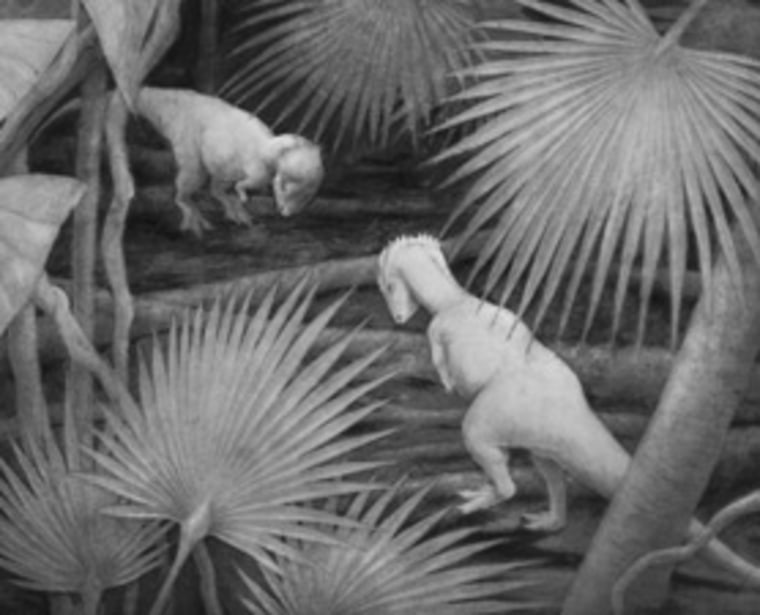A new species dinosaur found in Texas featured flanges on the side of its skull that may have allowed its skull bones to mesh like gears — a useful feature when it likely rammed heads with other dinosaurs, say researchers.
"It's possible that this would prevent the skull bones from dislocating under stresses," speculated Nicholas Longrich, a postdoctoral associate in Yale University's Department of Geology and Geophysics who was project leader for a study about the find published in the latest issue of the journal Cretaceous Research.
Named Texacephale langstoni, meaning "Texas head" and in honor of paleontologist Wann Langston, the new dinosaur lived 70 to 80 million years ago in what is now southwest Texas.
Texacephale langstoni represents a new genus of pachycephalosaur, a group of thick-skulled, plant-eating dinosaurs that moved around on two legs and probably first emerged in North America. Previously it was thought that this group of dinosaurs originated in Asia.
It possessed a softball-sized lump of solid bone on the top of its skull, which the researchers believe was used during head-to-head combat.
Longrich told Discovery News that he's not sure why the dinosaurs evolved this probable behavior but "access to females is one possibility" since that's why animals like bighorn sheep and musk oxen do it today.
"Another possibility is territory," said Longrich. "Pairs of birds will sometimes cooperate to defend territories."
He and colleagues Julia Sankey and Darren Tanke excavated skull fragments for the new dinosaur at Big Bend National Park, which is 300 miles from El Paso, Texas. They compared the fossils to those for dozens of related dinosaurs before determining these remains belonged to the new species.
The researchers additionally determined that T. langstoni was about as big as a medium-sized dog, which is average for a pachycephalosaur. Its super thick skull was almost like a built-in football helmet. The flanges on the side of the skull appear to have offered some kind of shock absorption.
The particular individual discovered by the scientists seemed to have suffered an injury too, since the researchers noticed "a crater in the top of the skull," which they say would not have been normal for this type of dinosaur.
All pachycephalosaurs, however, possessed lopsided skulls, and T. langstoni was no exception. Some animals today, such as deer, also have asymmetrical skulls and antlers.
The Texas dinosaur lived in a coastal floodplain that would have been similar to the Gulf Coast today. It coexisted with an animal called Deinosuchus, which probably preyed on T. langstoni whenever opportunity arose.
Deinosuchus "was an insanely huge crocodilian, something like 30 or 40 feet long," Longrich said. "There were also tyrannosaurs and some small dromaeosaurs."
He and his team believe the discovery of this new Texas species, added to the prior finds, lends weight to the idea that dinosaurs found in Canada and the northern United States were distinct from their southern neighbors.
"Instead of roaming across the North American continent, we see pockets of different dinosaurs that are pretty isolated from one another," he said. "Every time we get good fossils from Texas, they end up looking very different from those to the north."
